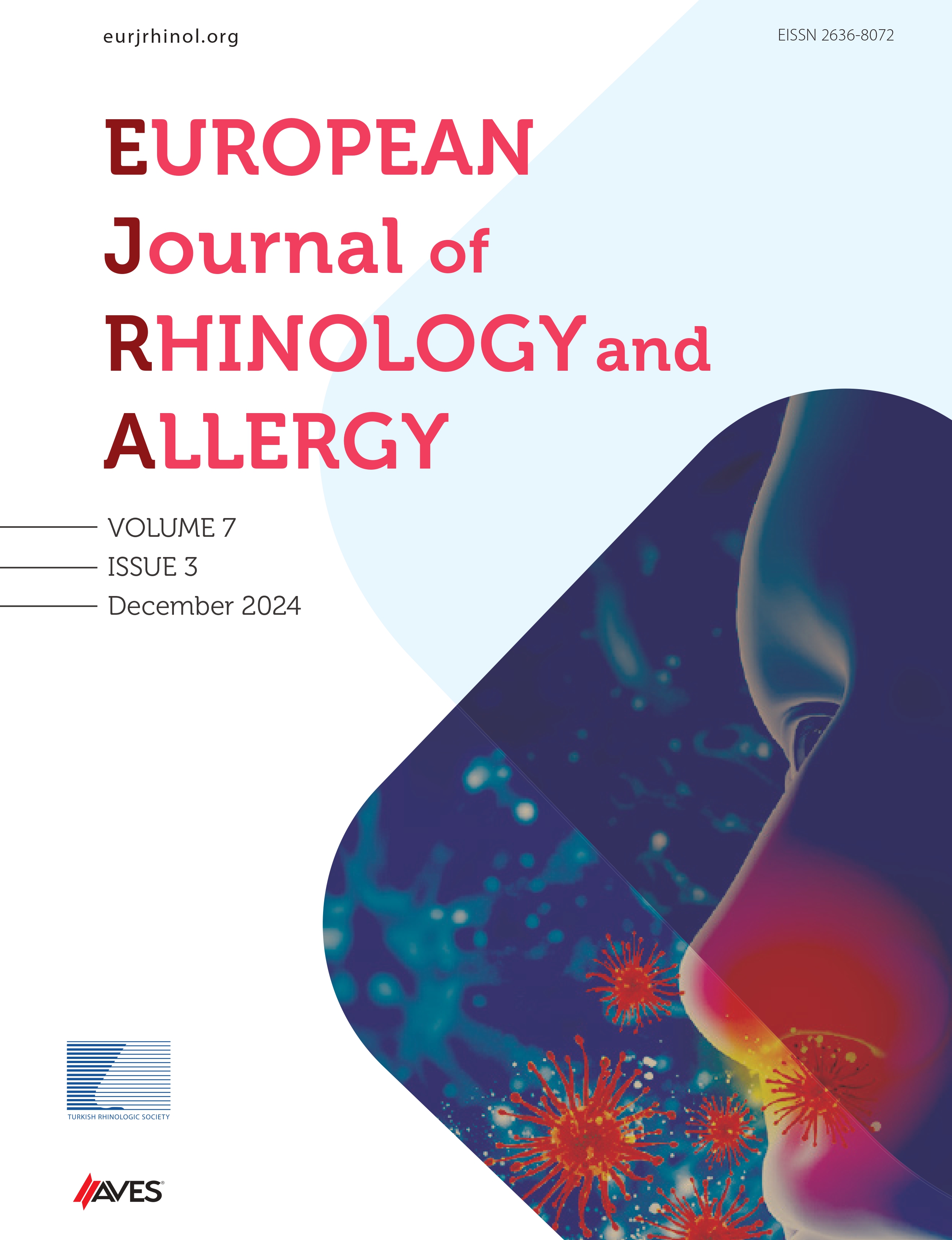Objective: The nasal symptoms of non-specific rhinitis affect a large proportion of older adults, and can significantly impact the quality of life. Our study aimed to determine the incidence of non-specific nasal hyperreactivity (NHR)-related exposure and the characteristics of rhinitis among elderly individuals in our country.
Material and Methods: Individuals aged over 65 years who applied to our outpatient clinic were asked whether they had nasal symptoms for more than 20 minutes a day and for more than 2 months in a year. Those who met these criteria were accepted as NHR and included the study group. The incidence, triggering factors, relationship with examination findings, and severity of symptoms were evaluated and recorded.
Results: Overall, the mean age was 74.56±7.21 (65-89) years. The most common symptom was nasal discharge and most common trigerring was temperature changes. Inferior turbinate hypertrophy was detected in most individuals who reported of irritant triggering. The mean rhinorrhea score was significantly higher in partipiciants of the study group with turbinate hypertrophy. The highest mean of Visual analog score (VAS) score was in the nasal discharge group.
Conclusion: There are important gaps in our knowledge about the frequency and characteristics of rhinitis in elderly adults in our country. In our study on this issue among older people in our country will provide important data on nasal hypersensitivity, which will be the guiding terms of other studies.
Cite this article as: Tüzüner A, Korkmaz MÖ, Bahçecitapar M. Non-Specific Nasal Hyperreactivity In Geriatric Age Group. Eur J RhinolAllergy 2021; 4(1): 7-11.

.png)

.png)